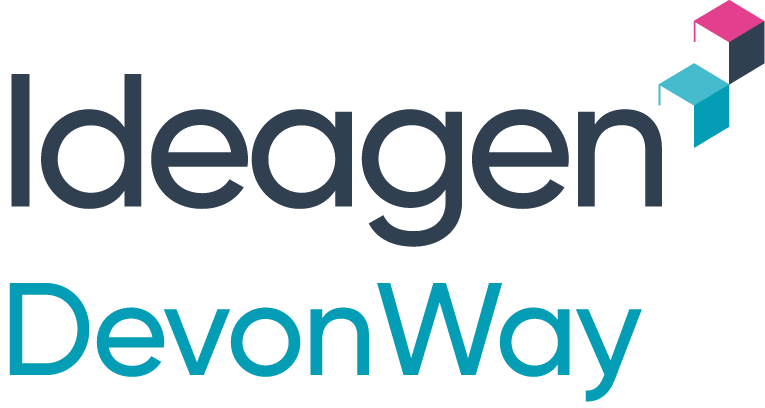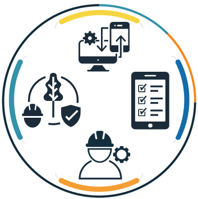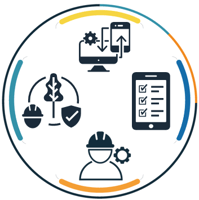
Organizational excellence starts with ensuring employers are providing a safe place to work – and these safety measures start with an organization’s environmental, health and safety (EHS) management. While most companies have always paid attention to these factors, how they track the quality, compliance and continuous improvement of EHS management is rapidly changing.
Organizations that want to offer the safest work environment and reduce risks must keep up with the latest technology to stay competitive. In fact, according to recent findings from Gartner, IT spending was set to increase 5.1% worldwide from 2021 to 2022. This year, enterprise software alone is projected to grow nearly 12% to more than $750 billion.
Leveraging the latest technology to drive EHS management is key to providing the safest operations and keeping workers’ safety as a top priority. Here are the top five reasons to use the latest software technology for your organization’s EHS management:
1. Organization-wide information lives in one place
Long gone are the days of filing cabinets and manila envelopes at the main office as an organization’s primary way to manage EHS and store information. Yet while most companies use some sort of online system for this type of information management, the latest technology puts an organization's information – and more of it – into cloud-based storage.
The benefits of cloud storage are plentiful, with one highlight being that data is accessible from any authorized device, from anywhere. That means regardless of location, the right people can access the right information at the right time.
Plus, software that specializes in EHS offers support beyond storage to break down silos and provide data points as they relate to the whole of the organization. For example, an organization’s technology should report on not only a single hazard risk assessment, but also measure how multiple hazards may interact together.
2. Information can be accessed in real time
In the field, quick access to reliable data is key to ensuring strong EHS standards and compliance, and being able to find and use this information can not only save time but help keep others safe. Implementing an EHS system creates a repository of information that contains real-time data and insights. For example, EHS software can help you easily reference things like jobsite-specific work permits, PPE standards, training requirements and other controls to ensure all hazards are known and worker safety is top of mind. And with mobile-friendly software, this information is literally at workers’ fingertips when they need it.
The right software should also work both ways as far as accessing information and inputting it. That way, those on the ground can share incidents, findings and reports in the moment (rather than when they get back to the office after the fact), helping ensure accuracy and timeliness of capturing important information.
3. Safety processes can be automated
To keep worker safety top of mind, it’s critical to stay in compliance and ensure all hazards are known at each jobsite of the organization. When looking across regions and specific regulations for each one, this can be tricky without a way to keep track of it all. The right EHS software should do just that, including by tracking:
- Hazards of onsite chemicals or equipment
- Operations, both routine and out of routine
- Compliance with local environmental health and safety regulations
Automating processes through a strong EHS software can also avoid missing next steps. This could include assigning actions to other individuals or teams with associated due dates, or automatically sending reporting to regulators when they’re needed.
4. Collaboration can grow across the organization
Ensuring strong EHS standards starts with understanding the conditions in the field – and for that, organizations must rely on their workers to be those eyes on the ground. The easier it is for them to share their findings – plus provide their own feedback, concerns and ideas – the safer that workplace will be. The right EHS management software should make it easy to collaborate across the organization (and beyond, with contractors and other important entities, too) to increase visibility across teams and locations.
Integrated technology will also provide further insights in a faster time, with opportunities to create and use in-the-moment image mark-ups, videos, geolocation, QR and barcode scanning, e-signatures and more. Workers can feel empowered, and the organization will have even more data to build upon in reaching its EHS goals.
5. Trends can be spotted and risks evaluated
Your organization’s data has a story to tell, and the latest EHS technology can uncover it for you. By tracking information across operations, modern technology can monitor safety performance and point out patterns that may otherwise not have been noticed.
With operational data all being inputted into one place, you can get more details and affect change, such as by monitoring behavior or performing root-cause evaluations. You’ll be able to see what’s working and what needs to be improved for more proactive, preventive and predictive EHS management.
Organizations strive to keep safety top of mind. By leveraging the latest EHS management software, you can harness the power of data and insights to truly prioritize worker safety like never before.
How DevonWay can help
DevonWay specializes in EHS software created for high-risk, highly regulated organizations that’s designed to break down silos and harness information from across all departments and traditional software boundaries. Through its single, secure platform that aligns information and measures from across the organization, DevonWay empowers people to take action before incidents occur and enables post-incident analysis to improve safety going forward. How can we help you reach your EHS goals? Reach out today to request a demo today.
Related Posts
Awesome New Miramar Features
DevonWay’s new Miramar user interface promotes productivity, speeds adoption, and minimizes...
New SEC Greenhouse Gas Reporting Rules Passed
On March 6, the U.S. Securities and Exchange Commission (SEC) adopted new rules for climate-related...
How New California Climate Law Could Impact Companies Worldwide
A new law in California was recently passed that will require 5,000-plus companies that do business...





